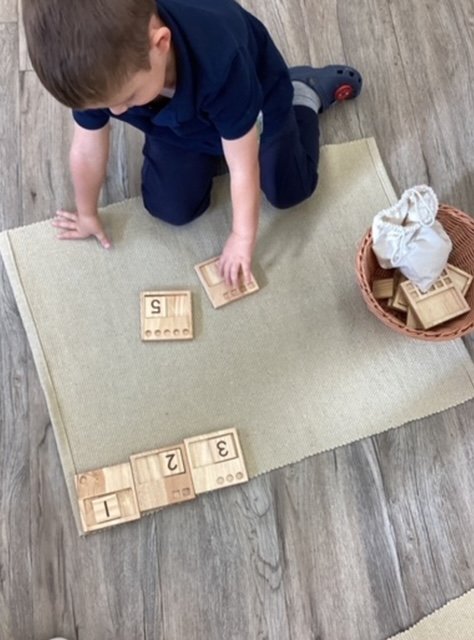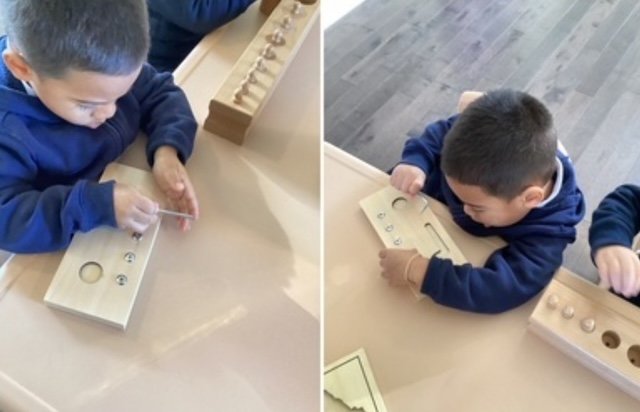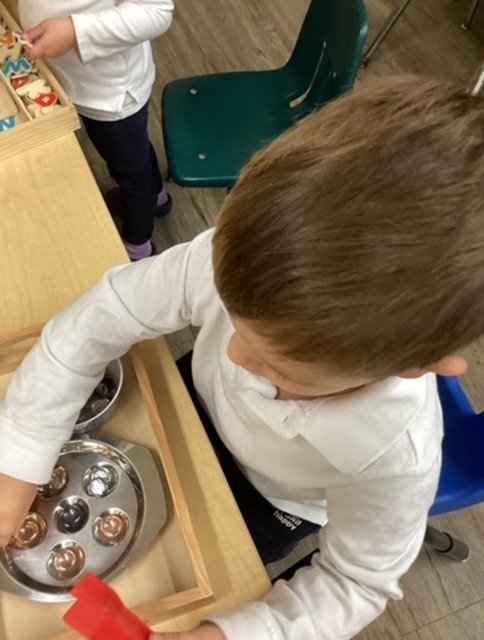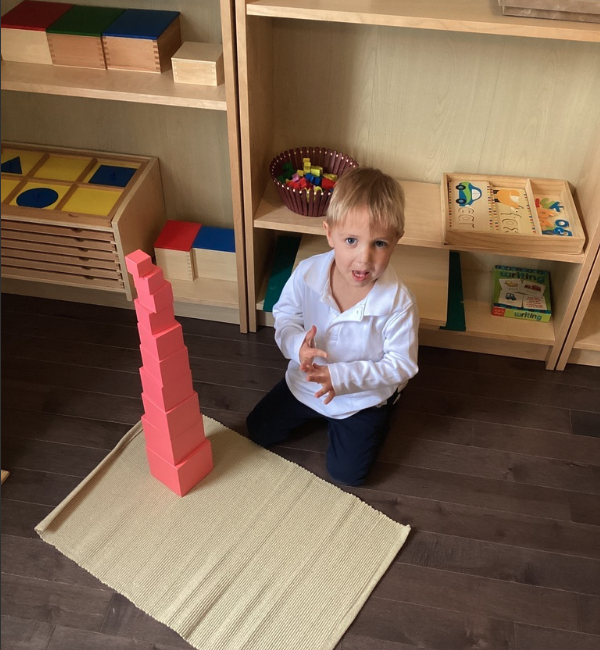
Casa / Preschool
Casa / Preschool
2 1/2 years to 6 years
At Tiny Bees Childcare we introduce our toddlers to a structured day and continue this structured day as they transition into the Casa/ Preschool program. Preschoolers are curious and capable in nature and are fast learners. Interactions between educators, parents and children is very important at this stage of development as open dialogue on their development is key. Our Case/Preschool Montessori Program builds on the toddler program in many ways.
Children at this age engage in activities in the following areas of learning:
Circle Time
With their wide-eyed curiosity and eager exploration, preschoolers gather in a semi circle. Our preschoolers start circle time with one friend chosen to hold the Canadian flag and all friends join in on singing Oh Canada. They do the good morning train, how many days of the week, months of the year, what’s the weather. A Child is called up at every one of these activities to help the educator put the correct numbers, days, dates and weather on the calendar. They also have interactive stories, montessori group learning, and simple sensory activities. Circle time at this age fosters their language development, strengthens social connections, and encourages their emerging independence.
Practical Life
These are purposeful activities that help children develop fine motor skills, hand eye coordination, independence, concentration, confidence and self-esteem. Practical life activities are based on real life skills. When taught early in life, they allow children to believe in themselves and develop self-discipline that they take with them through their lives.
Why is this important? It teaches the child things they will need to learn, but also that are motivated to learn while doing it in a way that is beneficial to the child.
Examples:
Learning to button their shirts and zip up their zippers
Learning to dress themselves
Sensorial
These exercises are designed to awaken children’s five senses: sight, sound, touch, smell and taste. These materials define height, size, shape, colour, sounds, smell and texture. With an awareness these concepts, the child develops clear and detailed vocabulary with guidance from their educators. The development and refinement of our senses are greatest during the earliest years of development.
Examples:
Pink Tower
Cylinder Blocks
Brown Stairs
Knobless Cylinders
Color Box 1, 2 and 3
Math
Children are introduced to the world of arithmetic in a logical, concrete, manner; from quantity to the idea of zero that are expressed in concrete form. Children are able to manipulate and internalize these concepts while being intrigued and drawn into mathematics. Children are exposed to numbers and math in their daily lives, as they see numbers on calendars, clocks and other daily objects, or hear their parents discussing money or how many of something exists. In the classroom our toddlers are introduced to numbers at this young age in an engaging way.
Examples:
Sandpaper numbers
Sandpaper number and quantities
Number rod and red rods
Language
Children are introduced to the phonetic sounds of the letters, which give them an understanding of written language. Tracing the letter of the alphabet made of sand paper prepare the children for writing at this age.
Examples:
Sandpaper letter
Object box











